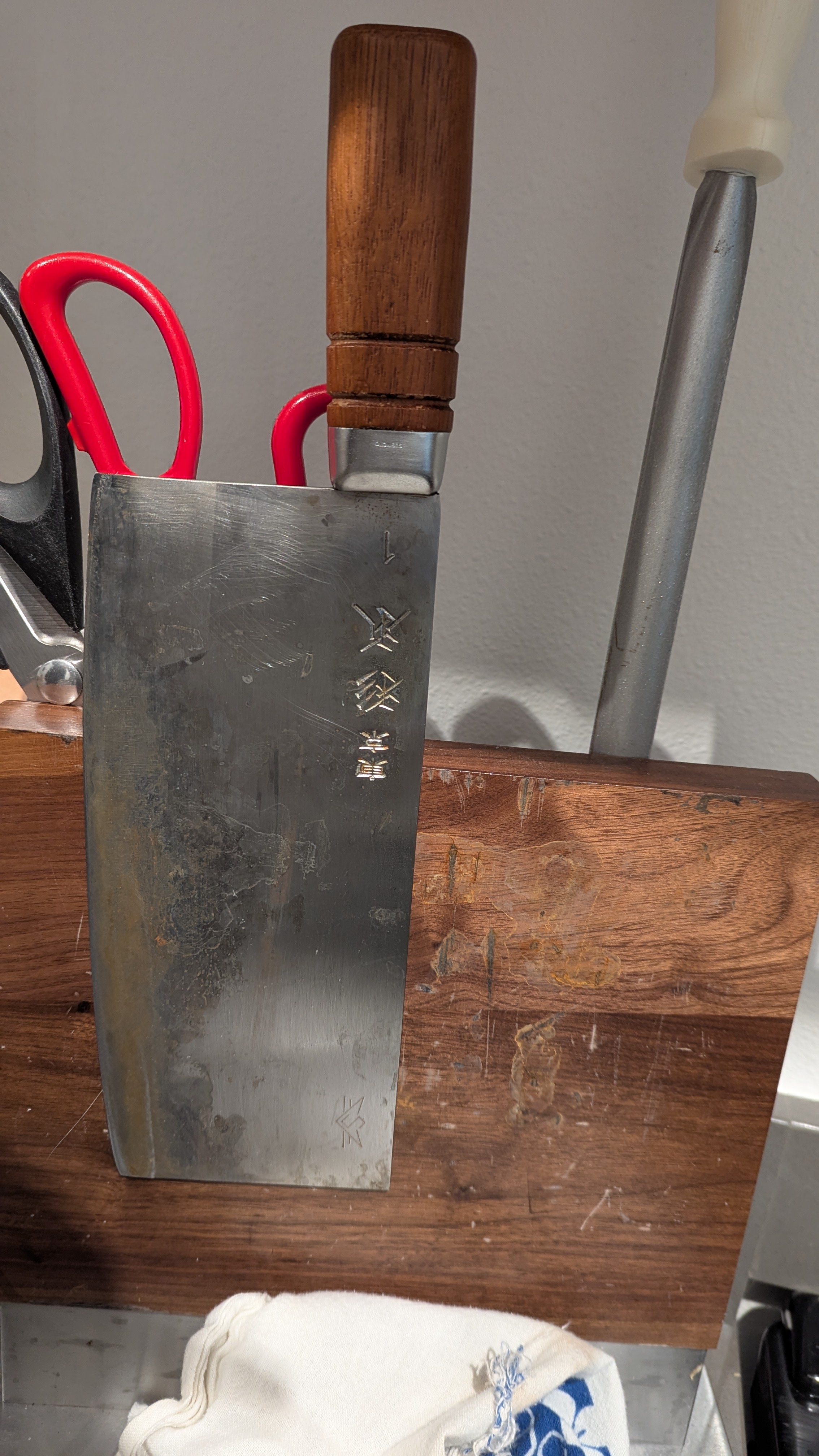Sugimoto #1 Review

Choosing a Knife for Home Use
Back in 2020-2021 I wanted to try to buy just 1 knife that I could use for everything. My knife at the time was a classic gyuto vg10 chef’s knife with a very thin profile. I wanted something that was less fragile, could be used as a long slicer, and relatively easy to maintain. I didn’t want to buy a separate long slicer, utility knife, and heavy butcher knife.
The Chinese chef’s knife, also called vegetable knife, is the perfect choice. It’s a knife that is versatile enough to do most jobs, but not optimized to do every little task like Japanese knives. It’s not recommended to use this type of knife for butchery but as long as the end closest to the handle is thick enough, tasks like cutting harder vegetables such as parsnips and whole garlic heads are doable. For the few times I do actual butchery, I choose to use scissors.
I purchased the standard version of the Sugimoto #1 back in August 2021 for just over 200$ USD. Honestly I should have probably considered the shi ba zi zuo or CCK standard knives, but I chose the Sugimoto because it’s not as thin and I could get it at reduced price. Like always I’m jumping head first into buying something nicer instead of testing if I really like the style first. I recommend trying the less expensive knives first.
Dimensions
220mm (length) X 95mm (height) X 3.2mm (thickest part)
Traditionally the bottom of the Chinese Vegetable knife is supposed to be completely flat forcing you to push cut all the things. Some makers such as Sugimoto create a very subtle slope to make the knife easier to use. However I find that push cutting everything is still the way to go with this style of knife.
Pros
- The aggressive taper in thickness allows you to use the base of the knife for harder vegetables or small bones while the thin end for fine work like slicing garlic or radish.
- Handle shape is flat on the sides but rounder on the top and bottom. I really like the handle design of this knife because it’s comfortable if you grip the handle with only your pinky and ring finger and the actual blade with the rest of your hand. It doesn’t roll over when you set the knife on the cutting board.
- Easy to maintain with a leather strop and ceramic/diamond rod. I only use the rod when I think I need to use it which is not very often. Most people recommend using the whetstone but I think for home use the leather strop only is completely fine. I do not use compound on the strop. I do send it to a professional whetstone sharpener every year or so.
Cons
- Very Reactive Carbon Steel if new. There is debate on what type of steel is used for this knife but most people agree it’s either Shirogami #2 (white #2) or something very similar. Over time the knife becomes way less reactive. I have used a rust eraser on it a few times. I will not claim that I have patina on my knife instead of rust like a knife enthusiast. I just accept that there will be rust on my knife most of the time.
- You have to learn how to hold the knife and push cut and it might take time if you are used to using a standard French chef’s knife or gyuto. A good rule of thumb is to try and balance the knife with your index finger. The spot where the knife is perfectly balanced is where you pinch the knife with your thumb. The rest of your fingers just wrap around naturally. Like earlier in the post, most likely you will only have your pinky and ring finger on the handle of the knife.
Considerations
The much taller Sugimoto #6 is the most sought after version for professional cooks, but for me I’ve never felt like I’ve needed anything taller than the #1 even for watermelon or other large items. In fact I should have probably considered the #30 which is even smaller than #1. There are also stainless versions for both knives but now that I had the knife long enough, I don’t really think it matters that much.